The top-tier Termanthia represents the pinnacle of Toro winemaking – powerful yet nuanced, with remarkable depth, complexity, intensity and elegance. The grapes come from 110- to 120-year-old vines growing in the extraordinary parcel known as Teso de los Carriles. They are handcrafted into wine: careful destemming, cool maceration, fermentation in concrete tanks, ageing for 20 months in 100% new French oak barrels and five years in bottle.
The estate’s flagship wine, Numanthia, comes from vines that are 70 to 80 years old on average and is aged for 18 months in French oak (60% new) and three years in bottle. It’s a red wine with integrated structure, dark fruit intensity, and well-rounded tannins.
3 things that make Bodega Numanthia special
1. Using ancient, ungrafted vines
Bodega Numanthia, which was founded by the Eguren family but is now part of Moët Hennessy and LVMH, selects from the best plots of old-vine Tinta de Toro grapes (a local Tempranillo variant). Some of these dry-farmed vines are more than a century old – ensuring naturally low yields (often below 2,000 kg/ha) and highly concentrated fruit.The ungrafted vines don’t appear to be in rows. To survive the dry climate, they need plenty of space for their roots to spread out and grow 3 or 4 metres down. About 40% of the vines are over 70 years old. The 4.8ha parcel of Teso de los Carriles includes a handful of vines that are over 140 years old.
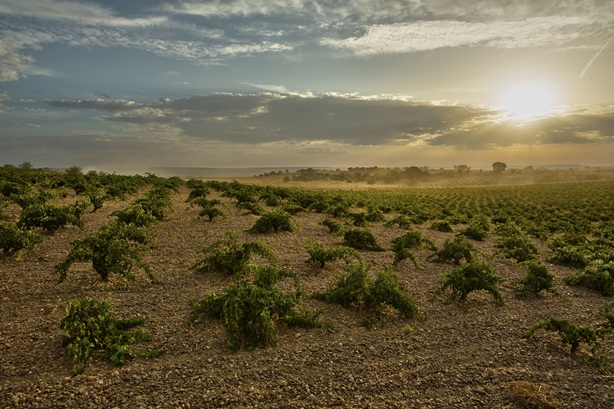
Canopy: Obviously, the vines are used to harsh conditions, but has climate change impacted them or are they just built to go on forever?
Julio Rodriguez: “To give you one specific example, the vintage 2022 was the warmest historically in the region and that year was the highest ever record harvest in tons for the region as well. So, there is something truly unique about the resiliency of those vines and those vineyards. They have learned so much from their past experience that they can actually smooth out the impacts coming from the environment. They have developed their systems in a way that they can actually tap on resources that younger vines cannot.
“With my previous role in LVMH, which was in Napa, you collect water from the winter and then you irrigate. The vines get exhausted and become less productive. After 22-23 years, you pull them out. The roots are not so deep and they become accustomed to having way too much.
“In Toro, we see the opposite. We see vines that struggle for a long time to become truly productive. So, that's what allows the region to be so special and it’s what allows the vines and vineyards to be resilient to what they are experiencing nowadays.”
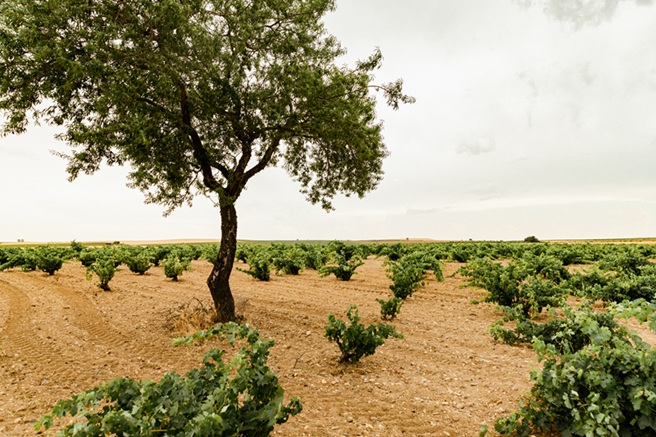
Are there many gaps now in the old vineyards?
JR: “Not many. From time to time we do see one vine that is dying. It happens in all vineyards. We have tried to see if we could replant in those spaces but there's no young vine that can thrive surrounded by these big boys.”
Pruning has become a bit of an art lately – has it changed at Numanthia?
JR: “We have super-experienced pruners who know very well where to cut and how to cut. We train our teams to do it in the right way.
“Our old vines wouldn't have survived if they were not pruned in the right way.”
Do you think part of the success of these old vines is because they are ungrafted?
JR: “Yes, we do feel that there is a value in having ungrafted vines.
“Using the 110 Richter rootstock across the board may not be the smartest approach. However, if you assess different rootstocks, maybe you can have a lot better results by grafting vines. Right now, we have three research and development projects at Numanthia. One of them is to assess eight different rootstocks – because we are not allowed to plant ungrafted vines in the region!”
What are your other projects?
JR: “We have done a selection of 120 clones which we have grafted onto the same American rootstock.”
120 clones of Tinta de Toro?
JR: “Yes. Understanding the clones and the rootstocks will allow us to be a lot more equipped for the future.”
These clones were all selected from your vineyards?
JR: “Yes, from the best vines – selected from all 150 blocks that we manage. The project is in its third year.”
Is there that much diversity between the clones?
JR: “You do sense the difference. We're trying to make sure that we are only going to elevate or improve the wine.”
How do you think Tinta de Toro differs to the Tempranillo you find elsewhere in Spain?
JR: “It has a bigger cluster and thicker skins – it’s the way Tempranillo in that region found to protect itself from the harsh conditions, which is basically avoiding dehydration given the heat.
“With thicker skins, you have a lot more components and ingredients in that skin. So, Tinta de Toro is a lot richer and more intense. Which means when you vinify these grapes, you need to be super careful on how you do it…”
2. Precision winemaking
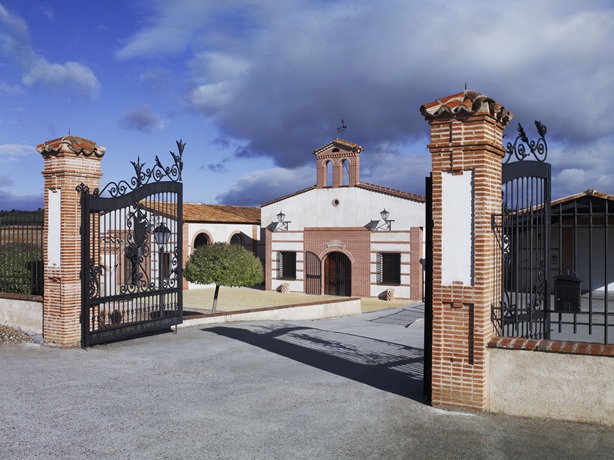
Early Numanthia vintages were known for their immense power and structure – almost overwhelming in their intensity. Since joining the LVMH group in 2008, there has been a slight shift toward greater balance and elegance while preserving the signature length and depth.
The grapes are hand-harvested, rigorously sorted by hand and machine, and cold-soaked for four days (protected by CO2) before inoculation with yeasts. Fermentation takes place over 13-14 days in small stainless-steel and concrete tanks to maintain parcel-specific characteristics. Skin contact is now around 18 days in total, but previously it was up to 25 days.
After spontaneous MLF in the tanks, the wines are then aged in 100% French oak barrels, with careful selection of toast levels to enhance, not overpower, the grape’s natural flavours. The wines are lightly filtered before ageing in bottles for several years.
JR: “We want to get our wines to be a bit more modern and approachable to consumers yet keeping the same backbone. We want the wines to be balanced. That's our key focus.
“So, for our wines to be balanced we understand there are two ingredients that are given by nature – the alcohol, so the sugar, and the acidity – and the only other element that we can work on is the tannins: how we round up the structure. The only way to make a round wine is if you work with your tannins in the right way.”
'The only way to make a round wine is if you work with your tannins in the right way'So, you have to pick the grapes with the right tannin ripeness?
JR: “That's the main point. It’s the tannins that will dictate the picking time. We know that we will have enough brix, that’s for sure. The acidity will be a given because of the grape type and cool nights. What dictates everything is the ripeness of the tannins. And we tell that by taste.”
Then what happens in the winery?
JR: “That’s when the magic starts happening. Because if you treat the grapes in the right way, all of that richness that you find in the skins – if you extract the good stuff from the skins, then you're going to have a great wine. If you over extract, then you're going to disbalance your wine.
“At the beginning there was no cool maceration. Then fermentation and post-fermentation they kept on macerating – getting a lot more ingredients from the thick skin and making the wines a lot richer. Compared to now, we were over extracting a little bit.”
‘In Toro if we want to craft a great wine, we need to take it easy’So, now the extraction finishes when the fermentation finishes?
JR: “Yes. And the extraction is very smooth. The pumpovers are super gentle: we do two gravity-works per day. In many regions, pumpovers are six works per day over seven days. If we did that, our wines would be completely unbalanced.
“We know that in Toro if we want to craft a great wine, we need to take it easy. It requires a lot of patience. We replicate the time that the community gives to the vineyards to become great vineyards.”
Why do you inoculate?
JR: “To make sure the fermentation starts in the right way. We’re trying to assess other yeasts that will allow us to balance even more the wine. There’s a yeast that converts sugar to lactic acid instead of alcohol, for example. This will allow us to moderate the alcohol production and to increase the total acidity. It barely changes the pH, but it will allow us to moderate the alcohol production if we want to.”
And the fermentation is all in tanks?
JR: “Right now, we are doing a lot more in concrete tanks. Most of our Numanthia is done in concrete tanks of 10,000 and 5,000L.”
Is the temperature controlled?
JR: “Yes, it's more or less the same: 22-26°C.”
And then it goes to barrel for ageing?
JR: “The wine is spending a lot less time in barrels now. And we are using larger barrels – 400 and 600L and finishing in ten foudre (5,000L) – because we want to avoid the impact of vanilla and toast in the complexity of the wine. But we are still using French oak for smoothing out the tannins.”
3. Terroir-driven wines

You blend from eight different terroirs across Toro – why no single-vineyard wine?
JR: “We vinify 57 lots every vintage. When we taste them together and we know which lots are going to Numanthia, we try to evaluate if one lot is above the blend. But it’s incredible – every time the blend is better than each of its components.
“There is also too much variability for one specific lot.”
Tasting Termanthia from 2014 and 2015, I comment on the vintage variation and ask if they are looking for a consistent style or are happy with vintage variability.
JR: “I love it when wines present a different face given a different season. You can have a wine that is the same every single year, but there would be a lot more treatment, a lot more hands-on. The more the wines express the terroir and what happens during the season, the more transparent they are.
“The essence is the same and the philosophy is exactly the same – we’re not going to change those because of the season. But we are not managing out the season on purpose.”
'The essence is the same and the philosophy is exactly the same – we’re not going to change those because of the season. But we are not managing out the season on purpose'

 English
English French
French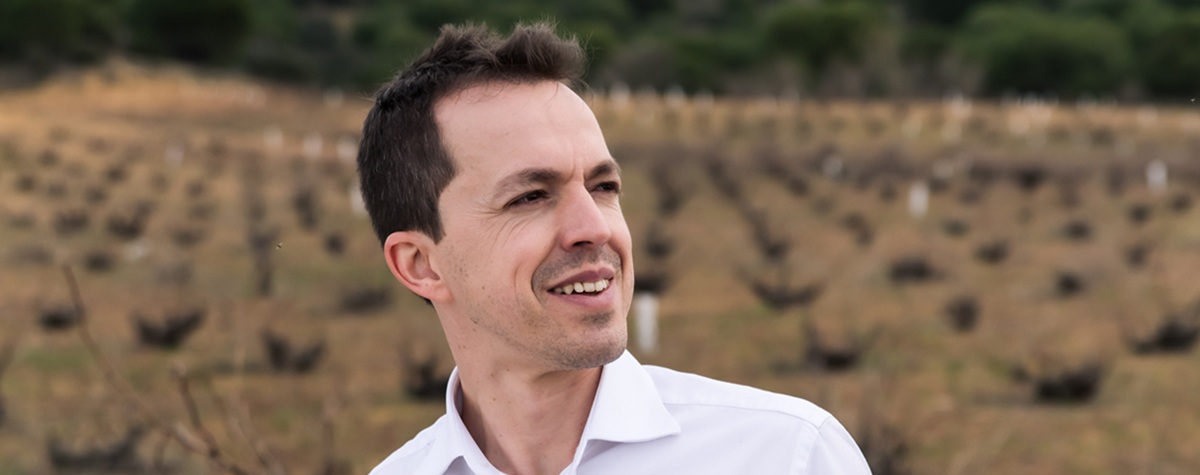

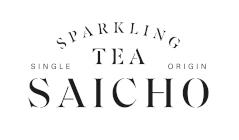




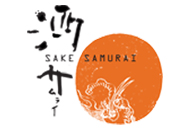
.png)


